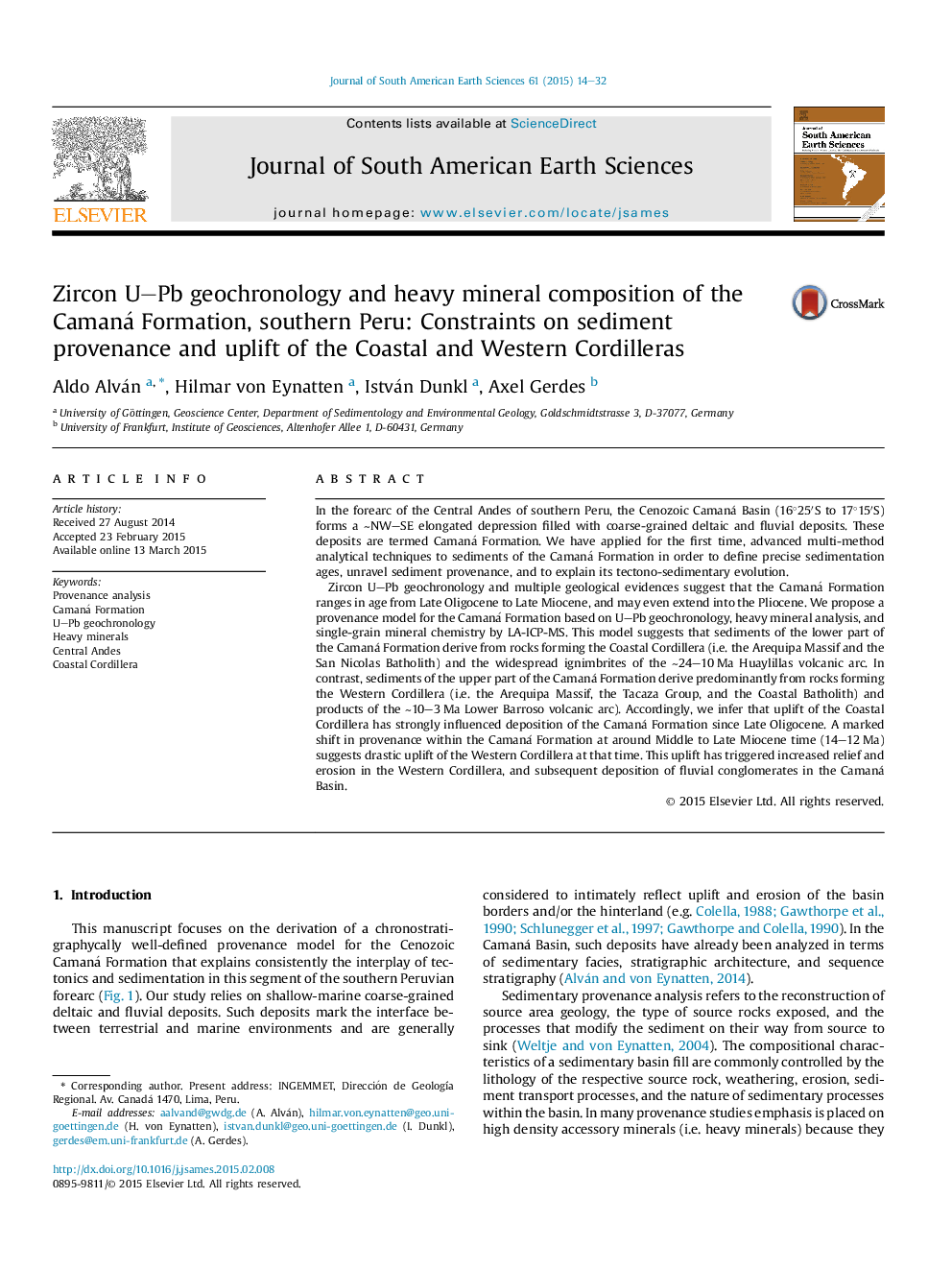| کد مقاله | کد نشریه | سال انتشار | مقاله انگلیسی | نسخه تمام متن |
|---|---|---|---|---|
| 4682214 | 1635148 | 2015 | 19 صفحه PDF | دانلود رایگان |

• Cenozoic Camaná Formation consists of coarse-grained deltas.
• Camaná Formation is Late Oligocene to Pliocene.
• Provenance of CamA is Coastal Cordillera, and provenance of CamB is Western Cordillera.
• Uplift of the Coastal Cordillera triggered deposition of coarse grained deltas (∼23–14 Ma).
• Uplift of the Western Cordillera triggered deposition of MoqD (CamB).
In the forearc of the Central Andes of southern Peru, the Cenozoic Camaná Basin (16°25′S to 17°15′S) forms a ∼NW–SE elongated depression filled with coarse-grained deltaic and fluvial deposits. These deposits are termed Camaná Formation. We have applied for the first time, advanced multi-method analytical techniques to sediments of the Camaná Formation in order to define precise sedimentation ages, unravel sediment provenance, and to explain its tectono-sedimentary evolution.Zircon U–Pb geochronology and multiple geological evidences suggest that the Camaná Formation ranges in age from Late Oligocene to Late Miocene, and may even extend into the Pliocene. We propose a provenance model for the Camaná Formation based on U–Pb geochronology, heavy mineral analysis, and single-grain mineral chemistry by LA-ICP-MS. This model suggests that sediments of the lower part of the Camaná Formation derive from rocks forming the Coastal Cordillera (i.e. the Arequipa Massif and the San Nicolas Batholith) and the widespread ignimbrites of the ∼24–10 Ma Huaylillas volcanic arc. In contrast, sediments of the upper part of the Camaná Formation derive predominantly from rocks forming the Western Cordillera (i.e. the Arequipa Massif, the Tacaza Group, and the Coastal Batholith) and products of the ∼10–3 Ma Lower Barroso volcanic arc). Accordingly, we infer that uplift of the Coastal Cordillera has strongly influenced deposition of the Camaná Formation since Late Oligocene. A marked shift in provenance within the Camaná Formation at around Middle to Late Miocene time (14–12 Ma) suggests drastic uplift of the Western Cordillera at that time. This uplift has triggered increased relief and erosion in the Western Cordillera, and subsequent deposition of fluvial conglomerates in the Camaná Basin.
Journal: Journal of South American Earth Sciences - Volume 61, August 2015, Pages 14–32